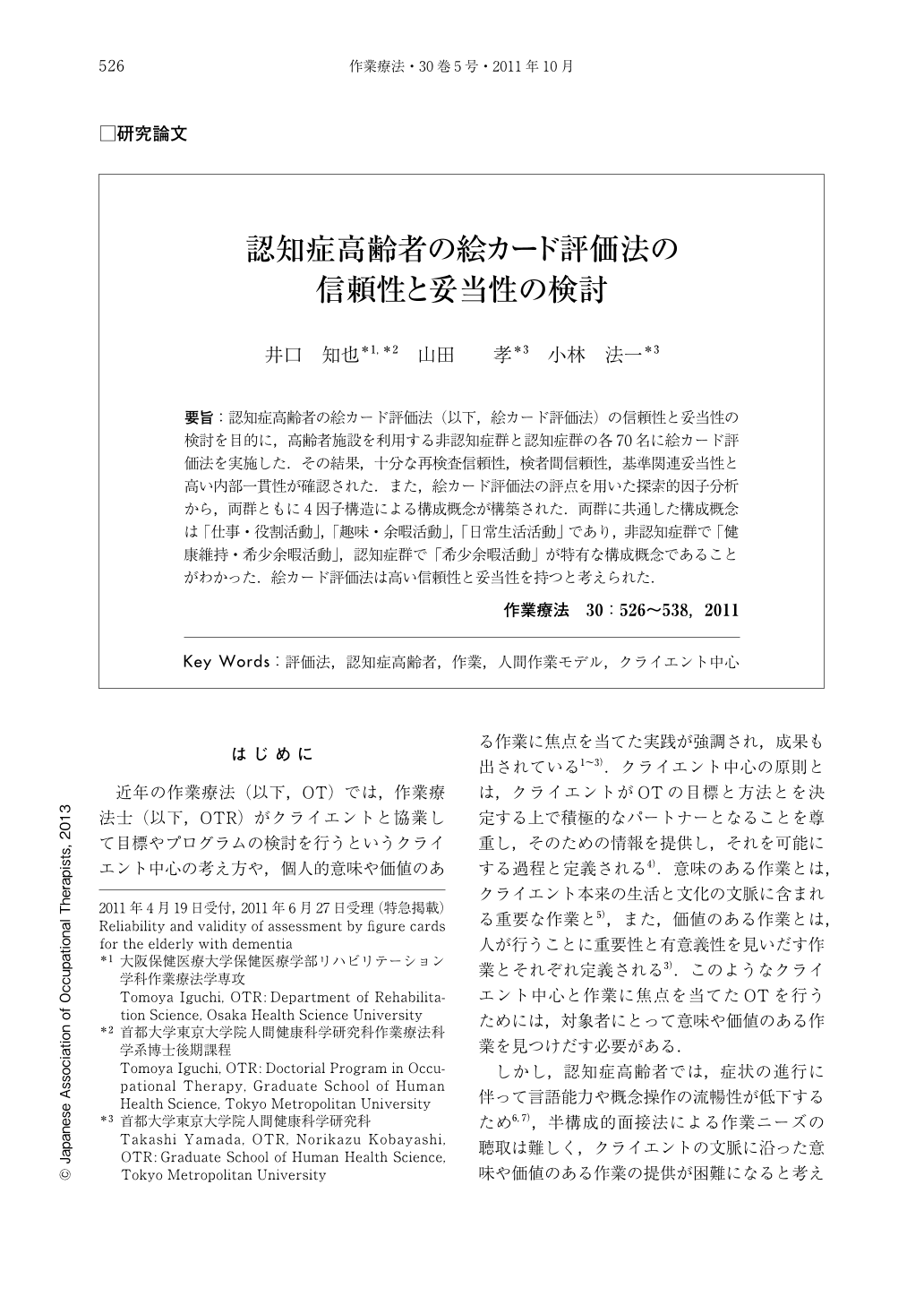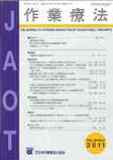Japanese
English
- 販売していません
- Abstract 文献概要
- 1ページ目 Look Inside
- 参考文献 Reference
- サイト内被引用 Cited by
要旨:認知症高齢者の絵カード評価法(以下,絵カード評価法)の信頼性と妥当性の検討を目的に,高齢者施設を利用する非認知症群と認知症群の各70名に絵カード評価法を実施した.その結果,十分な再検査信頼性,検者間信頼性,基準関連妥当性と高い内部一貫性が確認された.また,絵カード評価法の評点を用いた探索的因子分析から,両群ともに4因子構造による構成概念が構築された.両群に共通した構成概念は「仕事・役割活動」,「趣味・余暇活動」,「日常生活活動」であり,非認知症群で「健康維持・希少余暇活動」,認知症群で「希少余暇活動」が特有な構成概念であることがわかった.絵カード評価法は高い信頼性と妥当性を持つと考えられた.
The purpose of this study was to examine the reliability and validity of using figure cards to assess the elderly with dementia (ACD). We implemented the ACD for 140 persons (70 persons in the non-dementia group and 70 persons in the dementia group) at a health care facility for the elderly. We examined the test-retest reliability, the intra-tester reliability, the internal consistency based on Cronbach's α coefficient, and the criterion-related validity. Furthermore, based on an exploratory factor analysis, we examined the construct validity. Based on exploratory factor analysis using assessment scores, we found that the ACD had four factors structures in both groups. The factor structures common to the both groups were “work and role activity”, “hobby and leisure activity”, and “activities of daily living”. Constructs specific to each group were “health maintenance and rare leisure activity” (non-dementia group) and “rare leisure activity” (dementia group). In addition, the ACD was confirmed to have a high level of internal consistency, test-retest reliability, intra-tester reliability and criterion-related validity. Therefore, it is thought that ACD is an assessment method with high reliability and validity.

Copyright © 2011, Japanese Association of Occupational Therapists. All rights reserved.


